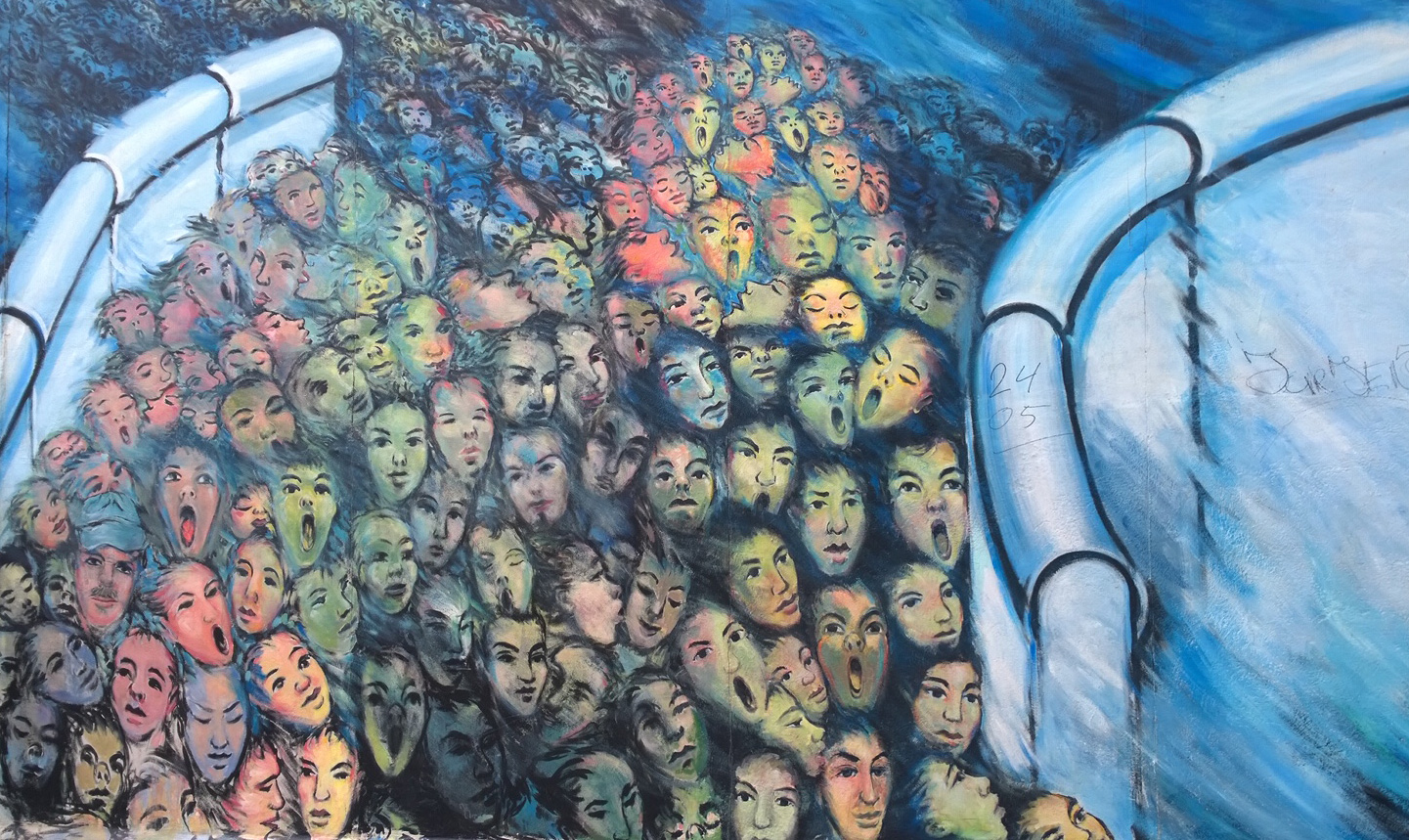By Morf Morford
Tacoma Daily Index
Earlier this month Germany, and the rest of the world, commemorated – even celebrated – the 30th anniversary of the fall of The Berlin Wall.
It made me consider the place, purpose and intent of walls around the world.
Speaker after speaker at memorials emphasized that walls do more than separate people – they separate ideologies and belief systems.
The Iron Curtain was the point of division between East and West, freedom and authoritarianism, democracy and tyranny, individual expression and grim conformity, opportunity and government control, a free press and state propaganda.
What do major border walls say about any of us?
A well-known tourist book described China’s Great Wall as “a monument to oppression”.
Any major wall, by any entity, is a monument, but to what?
The saying in defense of border walls “No border, no country” falls flat when one consider how few nations currently or historically ever had border walls.
If “building a wall” is so central to national identity and security, how did we get along so well (for over 200 years) without them?
A few ancient cities had walls, but even among them, their encroachment or even collapse (as in Jericho) is primarily how history remembers them.
To put it mildly, Americans have mixed feelings about walls and “hard” borders.
We love the idea of freedom – and hate the idea of constriction – especially by any government. The free and open range is key to our cowboy/Wild West identity.
“Don’t fence me in” was a hugely popular American theme song – sung by artists as varied as Bing Crosby, Frank Sinatra, Ella Fitzgerald and Willie Nelson.
Bob Hope sang it on The Muppet Show in 1977 and the first verse was featured in an episode of The Simpsons in 2002.
Freedom of movement is a central defining theme of being an American.
The USA is one of those few countries where one could easily travel for months – and thousands of miles – within its own borders.
Because of our sense of space, and the primacy of freedom of movement, few of us felt the need to travel abroad. In fact, in 2019 slightly less than half of US citizens have current, valid passports – which is far more than just a few years ago. In 1997 for example, 15% of us had passports. In 1990 it was 4%. (1*)
Few of us needed a passport back then (I didn’t get my first passport until 1999). And many of us apparently, see no reason to hold one now.
In other words, more than half of Americans are perfectly content staying within our own borders.
And for decades, if not centuries,we have welcomed others to do work we either don’t want to do (like picking fruit, landscaping, working as hotel maids or as CNAs in nursing homes) or careers that required far more study than most of us were willing to do – like software developers or medical professionals.


Oddly enough, as I have travelled the world, I have inadvertently found myself alongside or on some of human history’s greatest walls.
Just this summer, in August of 2019, as part of a tour across England, Scotland and Wales, we stopped at Hadrian’s Wall. This was the wall built by the Romans about two thousand years ago.
The Roman Empire had relentlessly expanded across Europe as it conquered Germany, France and England, among many others. The Romans had centralized bases in London and York (both in England).
And then it all stopped at the edge of Scotland.
Hadrian’s Wall was built to separate the Scots (known then as Picts) from the Romans.
Hadrian’s Wall is not tall or impressive – it stands about waist-high and is about one arm’s length across.
The Romans had a major semi-permanent outpost alongside the wall, with housing for families, but the wall continues to stand as a near-eternal monument to the limit of Roman Conquest.
Many years before that, I had lived in China and went on many hikes on The Great Wall. China’s Great Wall is actually many separate walls, built over about three thousand years by a long line of Chinese Emperors with the same intent; to keep out the northern invaders – usually the Mongolians.
China’s Great Wall stretches about three thousand miles and for most of its length was built wide enough to hold five horsemen side by side. Most of it stands 15-20 feet high.
The Great Wall has many guardhouses and gates to allow trade. It was built to stop armies, not individuals.
Much of it is currently overgrown, broken down or buried, but of the couple thousand miles or so that is exposed (or rebuilt) the construction (both materials and design) is visible.
The Great Wall is mostly made of massive stones – it would take two or three – or more – strong workers to move and place each one. And much of the Wall is out in the desert or plains – many miles from any mountains or quarry.
The cost in money or lives must have been immense.
This cost highlights the great irony of walls; no matter the expense, labor or even lives lost in the construction of walls, no wall can match history and human determination.
Our proposed wall (there has been a clearly delineated and secure barrier for decades – virtually all of the new wall is updated or improved).
Or at least it is intended to be improved.
Our “impenetrable, physical, tall, powerful, beautiful” border wall, it turns out, is easily compromised with cordless power drills available at any hardware store. (2*)
In 2004, then-reality TV star Donald Trump told graduates of Wagner College on New York’s Staten Island to “never, ever give up” and get past “a concrete wall” by whatever means (https://youtu.be/zaa4LB9iGpU).
When it comes to static – or even high tech obstacles, I’ll put my money on human determination and ingenuity any time.








